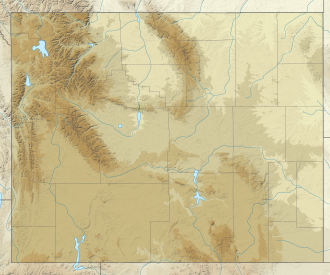| Quebec 01 Missile Alert Facility State Historic Site | |
|---|---|
 Entrance Sign to the Quebec-01 Historic Site in Chugwater, Wyoming | |
| Location | Laramie County, Wyoming, U.S. |
| Nearest city | Cheyenne, Wyoming |
| Coordinates | 41°32′35″N104°54′10″W / 41.54306°N 104.90278°W |
| Established | December 2017 |
| Governing body | Wyoming State Parks |
| Website | |
Quebec-One Missile Alert Facility | |
| Area | less than one acre |
|---|---|
| NRHP reference No. | 100009836 [1] |
| Significant dates | |
| Added to NRHP | December 11, 2023 |
| Designated NHL | December 11, 2023 |
The Quebec-One Missile Alert Facility, also known as Quebec-01 or Q-01, located 30 miles north of Cheyenne, Wyoming, near Chugwater, was a United States Air Force ICBM launch control facility. It was operated by the 400th Missile Squadron constructed in 1962. The Missile Alert Facility operated with a Minuteman missile until 1970 when it was converted to a Minuteman-III site. Finally in 1986, the facility was converted to operate the Peacekeeper ICBM. The facility was deactivated in 2005 and turned over to Wyoming State Parks in December 2017. [2] The facility was opened to the public in August 2019 as the Quebec 01 Missile Alert Facility State Historic Site after restoration work done by the United States Air Force. [3]
Contents


